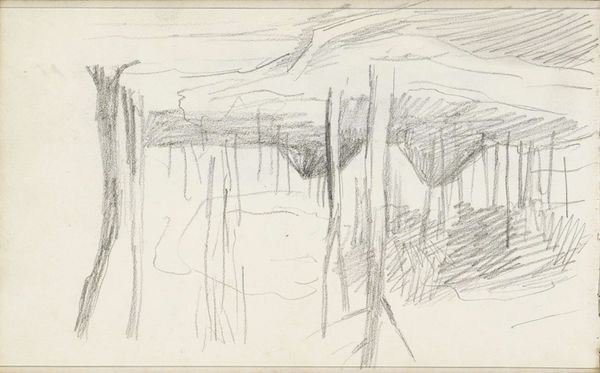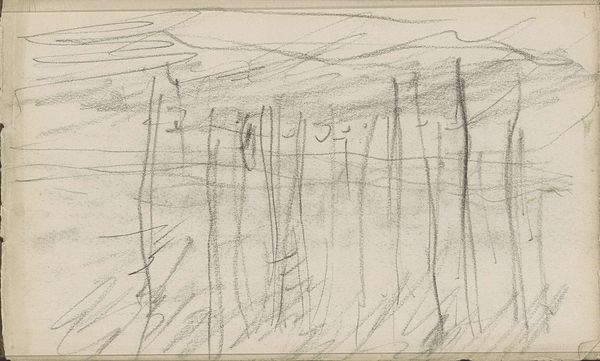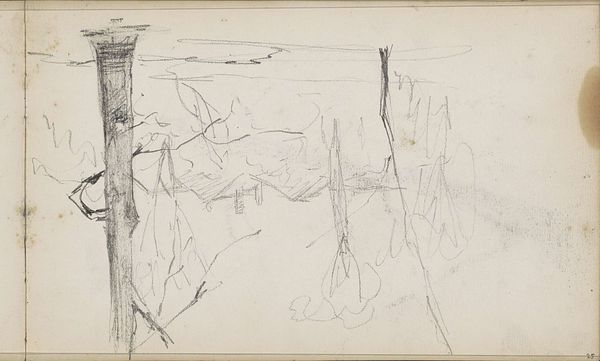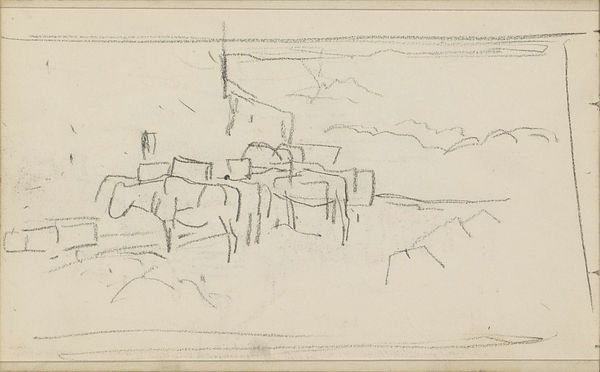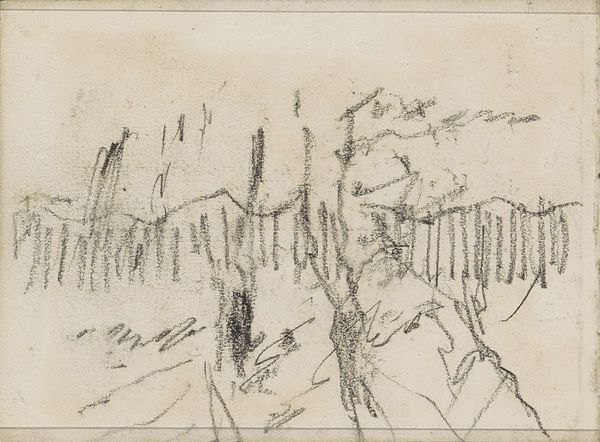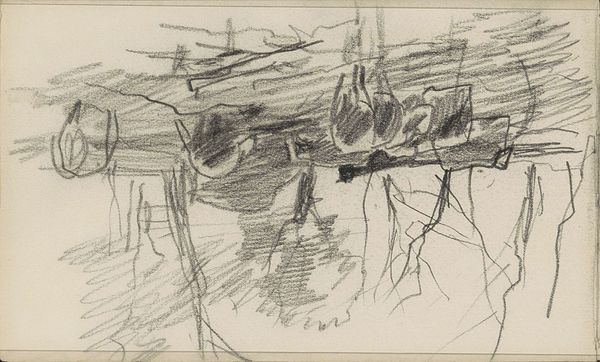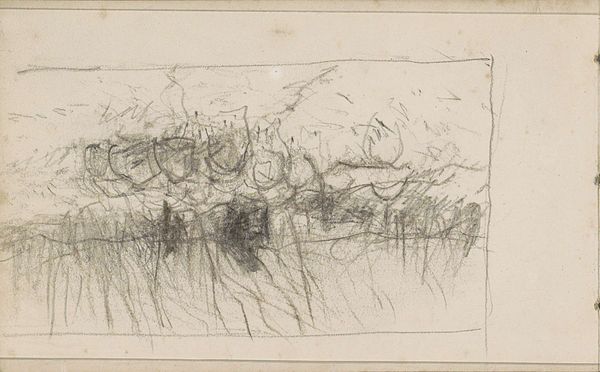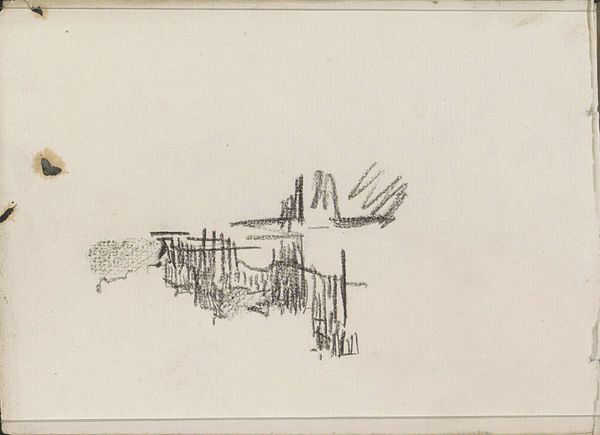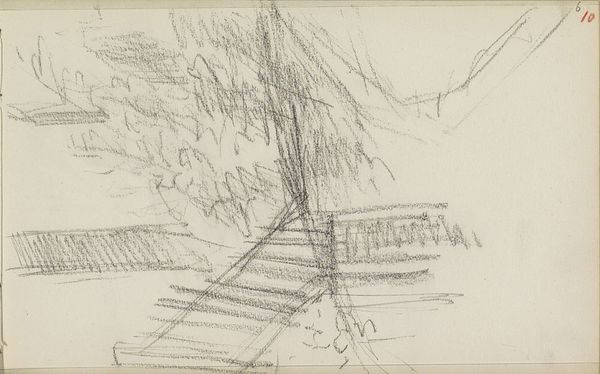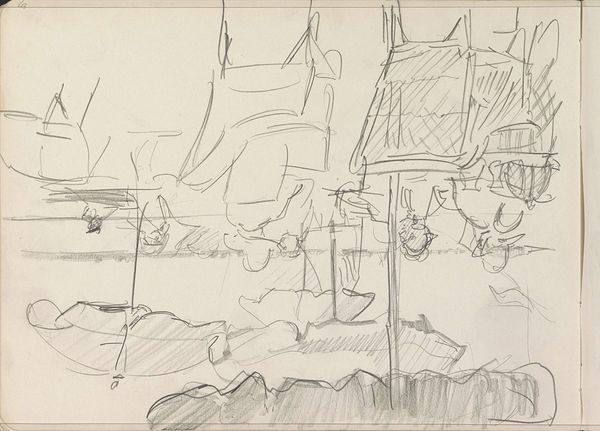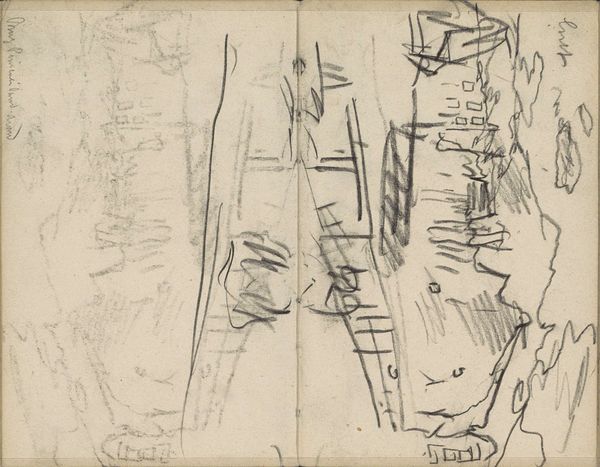
drawing, pencil
#
drawing
#
amateur sketch
#
impressionism
#
pen sketch
#
landscape
#
personal sketchbook
#
idea generation sketch
#
sketchwork
#
ink drawing experimentation
#
pen-ink sketch
#
pencil
#
sketchbook drawing
#
sketchbook art
#
realism
#
initial sketch
Copyright: Rijks Museum: Open Domain
Editor: This drawing, "Row of Saddled Donkeys," is attributed to Anton Mauve and thought to have been made sometime between 1848 and 1888. It’s a pencil sketch on paper. What strikes me is how simplified the forms are. How would you describe Mauve’s artistic intention here? Curator: The schematic character of the work, evidenced by the repetition of vertical and curved lines, yields to a deliberate exploration of form rather than a mimetic representation of donkeys. Notice how the marks are almost abstract, and the tension created by these repetitive marks which constitute the visual space of the paper. Editor: So, you’re saying that the individual donkey is less important than the overall pattern? Curator: Precisely. The work privileges a study of the basic visual components; we might consider these sketches a field for experiment. Can you see how the variations in line thickness and density function independently of a descriptive function? Editor: I do. The varying pressure of the pencil creates darker and lighter areas. How does that add to the piece? Curator: It constructs the illusion of depth through tonal variation, but even that serves the formal structure over representation. The dark lines hold visual weight. The lighter shading infers landscape. It is this construction, deconstruction, and reconstruction of fundamental visual elements that should form the focus of observation. Editor: I see it now. I was trying to find the donkeys, but I should have been looking at the lines. Thank you. Curator: Indeed, the reduction of the motif to basic graphical elements offers a window into the essential aspects of the work. It is only through deconstruction that true insight may arise.
Comments
No comments
Be the first to comment and join the conversation on the ultimate creative platform.
